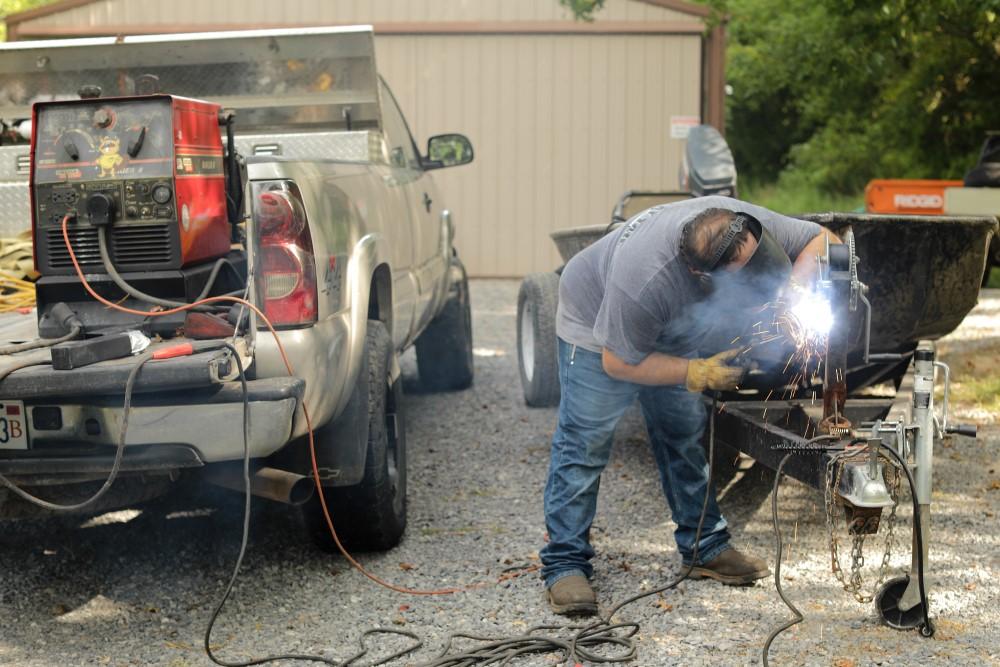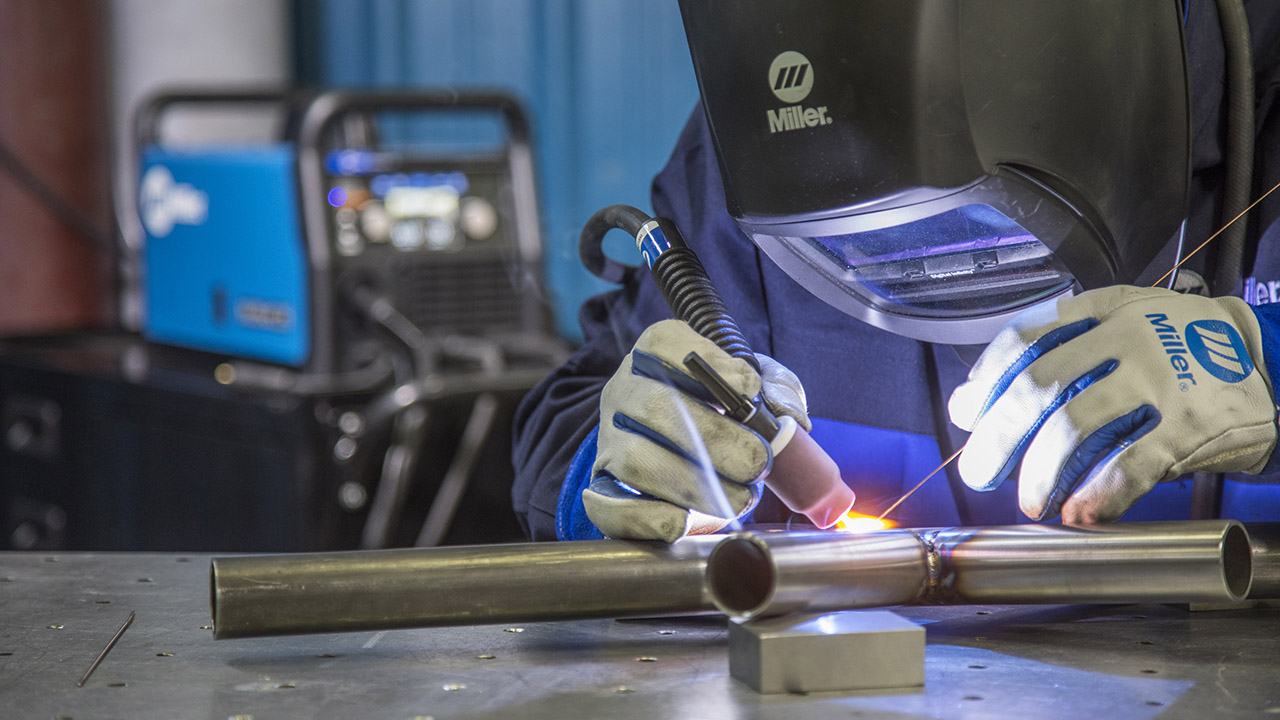Common Welding Repair Work Issues and Exactly How to Address Them Properly
Welding repair services frequently run into a variety of problems that can jeopardize the honesty of the end product. Typical problems consist of insufficient penetration, porosity, and imbalance, amongst others. Each flaw offers special challenges that need particular methods for resolution. Comprehending these problems is important for welders intending to boost their end results and skills. This discussion will certainly discover these usual welding fixing issues and effective methods to address them.
Poor Infiltration
Poor infiltration occurs when the weld steel stops working to completely fuse with the base product, leading to weak joints and potential structural failures. This issue commonly originates from inadequate warm input, incorrect electrode angle, or improper welding speed. Welders may run into inadequate infiltration due to a miscalculation of the needed criteria for a details product thickness or type. Furthermore, contamination on the base product's surface can prevent effective bonding, aggravating the trouble. To attend to poor infiltration, welders should assure appropriate settings on their tools and maintain a tidy job surface. Normal examination of welds is suggested to identify any kind of shortages early, permitting prompt adjustments and the avoidance of compromised architectural stability in bonded assemblies.
Porosity
Porosity is a common problem in welded joints that materializes as little gas bubbles caught within the weld steel. This flaw can jeopardize the honesty of the weld, leading to decreased strength and prospective failure under stress. Montana Mobile Welding and Repair Fabrication. Porosity generally emerges from contamination, moisture, or improper welding methods, which enable gases to leave right into the liquified weld swimming pool. To attend to porosity, welders should guarantee correct surface area prep work, keep a tidy workplace, and use ideal welding specifications. Furthermore, choosing the ideal filler product and protecting gas can minimize gas entrapment. Regular examination and screening of welds can help determine porosity early, ensuring prompt rehabilitative actions are taken, consequently preserving the quality and dependability of the bonded structure
Imbalance
Imbalance in welding can emerge from various factors, consisting of improper configuration and thermal expansion. Comprehending the source is important for effective resolution. Several improvement strategies are available to realign parts and ensure structural honesty.
Reasons for Misalignment
Welding misalignment usually comes from a range of underlying issues that can compromise architectural integrity. One primary reason is incorrect fit-up of components before welding, which can bring about spaces and unequal surfaces. Variations in thermal expansion throughout the welding procedure can likewise lead to distortion, especially if the materials being signed up with have different coefficients of growth. Additionally, inadequate clamping and fixturing may stop working to hold elements safely in place, causing activity throughout welding. Inadequately kept tools, consisting of welding devices and devices, may present variances in the weld grain, more adding to misalignment. Driver error, stemming from inadequate training or experience, can likewise play a significant function in producing misaligned welds.

Adjustment Methods Available
Dealing with misalignment properly requires a combination of rehabilitative strategies tailored to the details issues handy. One usual technique is making use of fixtures or jigs to hold components in the appropriate setting throughout welding, guaranteeing regular positioning. In addition, preheating the products can help in reducing distortion and enhance fit-up. For considerable misalignment, mechanical realignment strategies, such as using hydraulic jacks or clamps, can be utilized to deal with the setting prior to welding. Post-weld warm treatment may also be necessary to eliminate stresses triggered by misalignment. Careful examination and adjustment throughout the setup stage can prevent misalignment problems from ending up being substantial troubles, promoting a smoother welding process and boosting total structural integrity.
Distortion
Distortion is a typical obstacle in welding that can occur from numerous factors, including irregular cooling and heating. Understanding the root causes of distortion is necessary for implementing efficient avoidance strategies. Resolving this issue not only improves structural stability however likewise boosts the overall quality of the weld.
Sources of Distortion
When subjected to the extreme heat of welding, products frequently go through changes that can lead to distortion. This phenomenon largely occurs from thermal development and tightening during the welding process. As the weld location warms up, the material broadens; upon cooling, it gets, which can create inner stresses. Furthermore, irregular home heating across a workpiece can intensify these tensions, causing bending or flexing. The kind of product likewise plays a significant role; steels with varying thermal conductivity and coefficients of growth might respond in a different way, bring about unforeseeable distortions. Poor joint layout and inadequate fixturing can add to imbalance during welding, increasing the probability of distortion. Understanding these reasons is important for efficient welding fixing and prevention techniques.
Prevention Techniques
Efficient avoidance techniques for distortion during welding concentrate on regulating heat input and ensuring proper joint design. Keeping a regular heat input aids to reduce thermal expansion and contraction, which can cause distortion. Using methods such as preheating the workpiece can also reduce the temperature slope, promoting uniform heating. Additionally, selecting proper joint styles, such as T-joints or lap joints, can boost stability and lower tension focus. Implementing appropriate fixturing to secure the workpieces in position better help in preserving alignment throughout the welding process. Ultimately, staggered welding sequences can distribute warmth much more equally, preventing local distortion. By using these strategies, welders can significantly reduce the probability of distortion and enhance the overall high quality of their welds.
Breaking
Breaking is a typical issue run into in welding repair services, commonly arising from different variables such as improper cooling prices, material option, or inadequate joint prep work. The event of cracks can significantly endanger the stability of the weld, bring about potential failings during operation. To resolve this concern, welders need to initially examine the root right here creates, guaranteeing that products are compatible and appropriately picked for the specific application. In addition, regulating the air conditioning rate throughout the welding process is crucial; quick air conditioning can generate stress and result in breaking. Appropriate joint style and prep work also add to lessening the risk. Executing these methods can enhance weld quality and durability, eventually decreasing the possibility of cracking in completed weldments.

Insufficient Blend
A substantial issue in welding repairs is incomplete blend, which occurs when the weld steel does not sufficiently bond with the base material or previous weld passes - Montana Mobile Welding and Repair Welding. This issue can lead to weak points in the joint, potentially endangering the integrity of the welded framework. Factors adding to incomplete fusion include inadequate warm input, improper welding technique, and contamination of the surface areas being signed up with. To resolve this problem successfully, welders ought to ensure appropriate pre-weld cleaning and surface preparation, in addition to adjust their welding specifications to achieve appropriate penetration and blend. Normal examination during the welding procedure can additionally aid identify insufficient blend early, allowing for prompt restorative actions to boost the general top quality of the weld
Overheating
While welding fixings can boost architectural stability, overheating presents a substantial obstacle that can lead to product deterioration. Too much warmth throughout welding can change the mechanical residential or commercial properties of steels, causing decreased toughness, increased brittleness, and bending. This sensation is specifically crucial in high-stress applications where architectural integrity is extremely important. Recognizing overheating can involve visual inspections for discoloration or distortion, along with keeping track of temperature during the welding procedure. To mitigate the dangers related to overheating, welders need to employ ideal techniques, such as controlling heat input, readjusting traveling redirected here speed, and utilizing ideal filler materials. Additionally, carrying out pre- and post-weld warmth treatments can help recover product homes and improve the general top quality of the repair, guaranteeing long-term efficiency and safety and security.
Frequently Asked Inquiries
What Are the Usual Indicators of a Welding Problem?

How Can I Examine My Welds for High quality?
To test welds for quality, one can utilize aesthetic assessments, ultrasonic testing, and radiographic techniques. Each strategy ensures structural honesty, recognizes defects, and validates adherence to defined criteria, inevitably enhancing the integrity of the welded joints.
What Safety and security Precautions Should I Take While Welding?
When welding, one should prioritize security by using proper personal safety equipment, making certain appropriate ventilation, safeguarding combustible materials away, maintaining navigate here a tidy work area, and understanding surroundings to avoid injuries and accidents.
Can I Repair a Weld Without Remodeling the Entire Joint?
Repairing a weld without renovating the whole joint is feasible, relying on the damages (Fabrication). Methods such as grinding, including filler product, or using a welding process can effectively address particular flaws while maintaining the bordering framework
What Equipment Are Essential for Effective Welding Services?
Necessary devices for reliable welding repair work include a welding equipment, cable brush, grinder, protective gear, clamps, and filler products. Each tool plays an important role in guaranteeing quality and safety and security during the repair service procedure. Porosity commonly occurs from contamination, wetness, or incorrect welding techniques, which enable gases to get away into the liquified weld swimming pool. Improperly maintained devices, including welding makers and devices, may introduce disparities in the weld grain, more contributing to imbalance. When subjected to the extreme warm of welding, products commonly undergo modifications that can lead to distortion. Cracking is a common issue encountered in welding repair work, typically resulting from different variables such as improper air conditioning prices, product option, or poor joint preparation. A significant concern in welding repair work is incomplete fusion, which occurs when the weld metal does not sufficiently bond with the base material or previous weld passes.